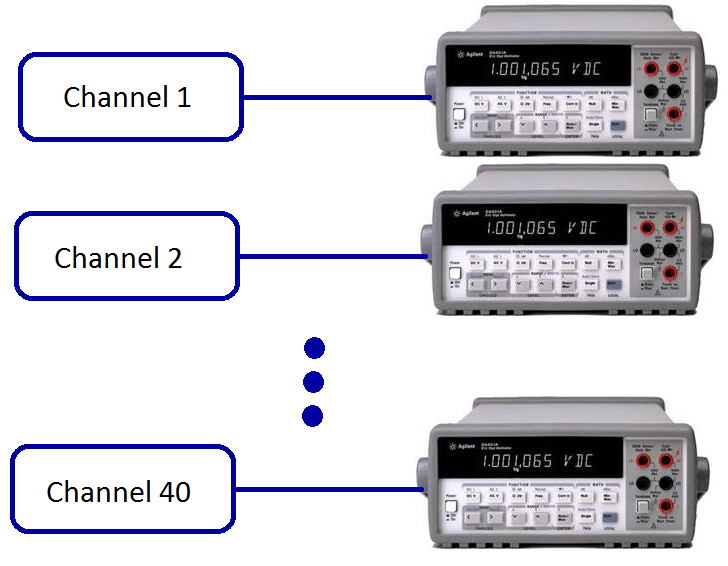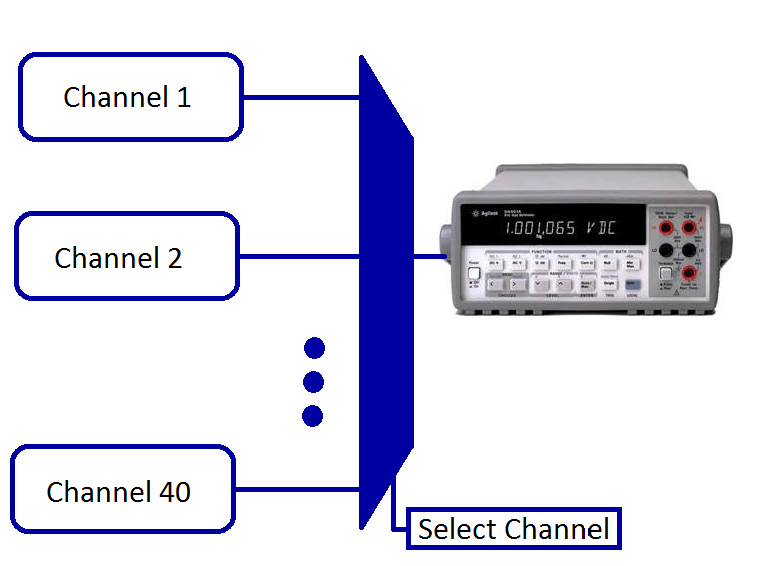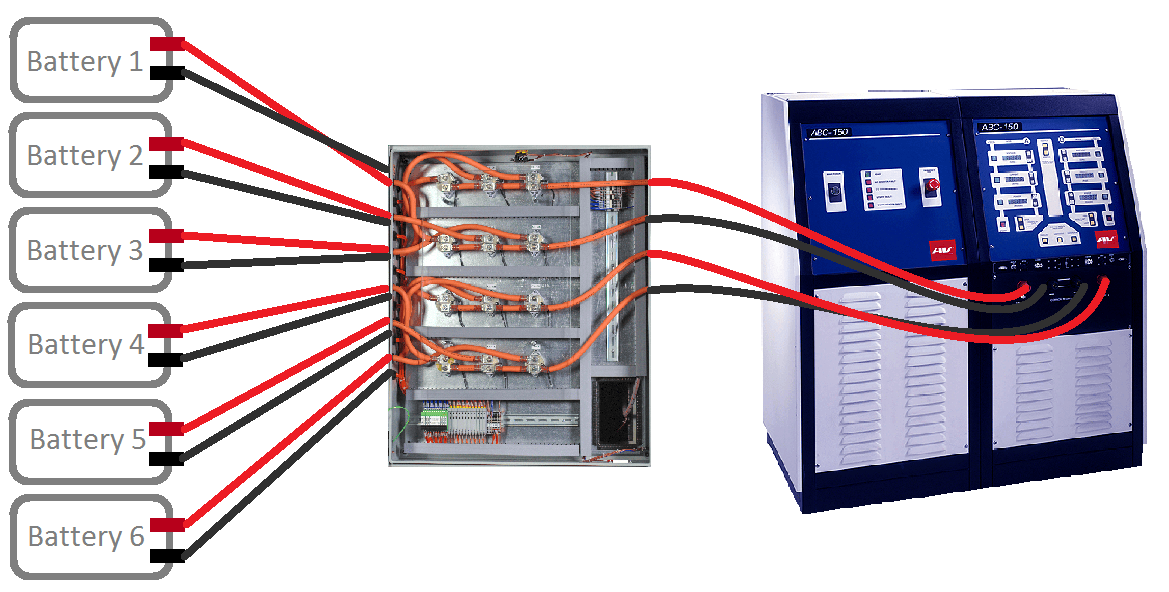DMC was asked by a client to provide a system that could analyze voltage, current, and resistance across any of 40 signal lines. Having a digital multi-meter (DMM) attached to each signal line to record measurements would have been a costly solution. Instead, a muxing wiring design was implemented. This design used inexpensive relays to switch between connecting the DMM to any of the 40 channels. This effectively converged 40 input channels into a single measurement line wired directly to the DMM. Any channel could be analyzed using this system, resulting in large cost savings for the customer and increased scalability for their application, should they want to add more channels in the future.


The figure on the left shows channel monitoring without multiplexing. Notice that a DMM is used for every channel. To enable sharing of that expensive resource, a multiplexing wiring scheme is used, as shown on the right.
DMC also did another project with a client who wanted to test electric vehicle batteries using a high voltage power supply. The power supply was able to connect to two battery packs and cycle them through various testing requirements. To improve testing throughput/bandwidth while reducing test setup times, the client requested that DMC provide a solution to test six battery packs on one test station instead of just two. DMC leveraged its experience with multiplexing to provide a demuxing solution. The final product, a turnkey solution referred to as the MUX Box, takes the two power cables from the power supply and splits them each into three channels. This is accomplished by using high power Kilovac contactors to switch the electrical pathway from the power supply to the different battery packs according to an input signal from the main software application.

So why do you need to use multiplexers? Well, you don’t, but depending on your application, you could achieve cost and scalability benefits from doing so. The primary purpose of using multiplexers is to reduce necessary hardware resources by allowing all channels to share a single device. It is often the case that the cost of adding separate data acquisition (DAQ) or output devices for each individual channel is greater than the cost of implementing a multiplexing strategy.
Click Here for more information on DMCs latest generation of Battery Production Test systems.